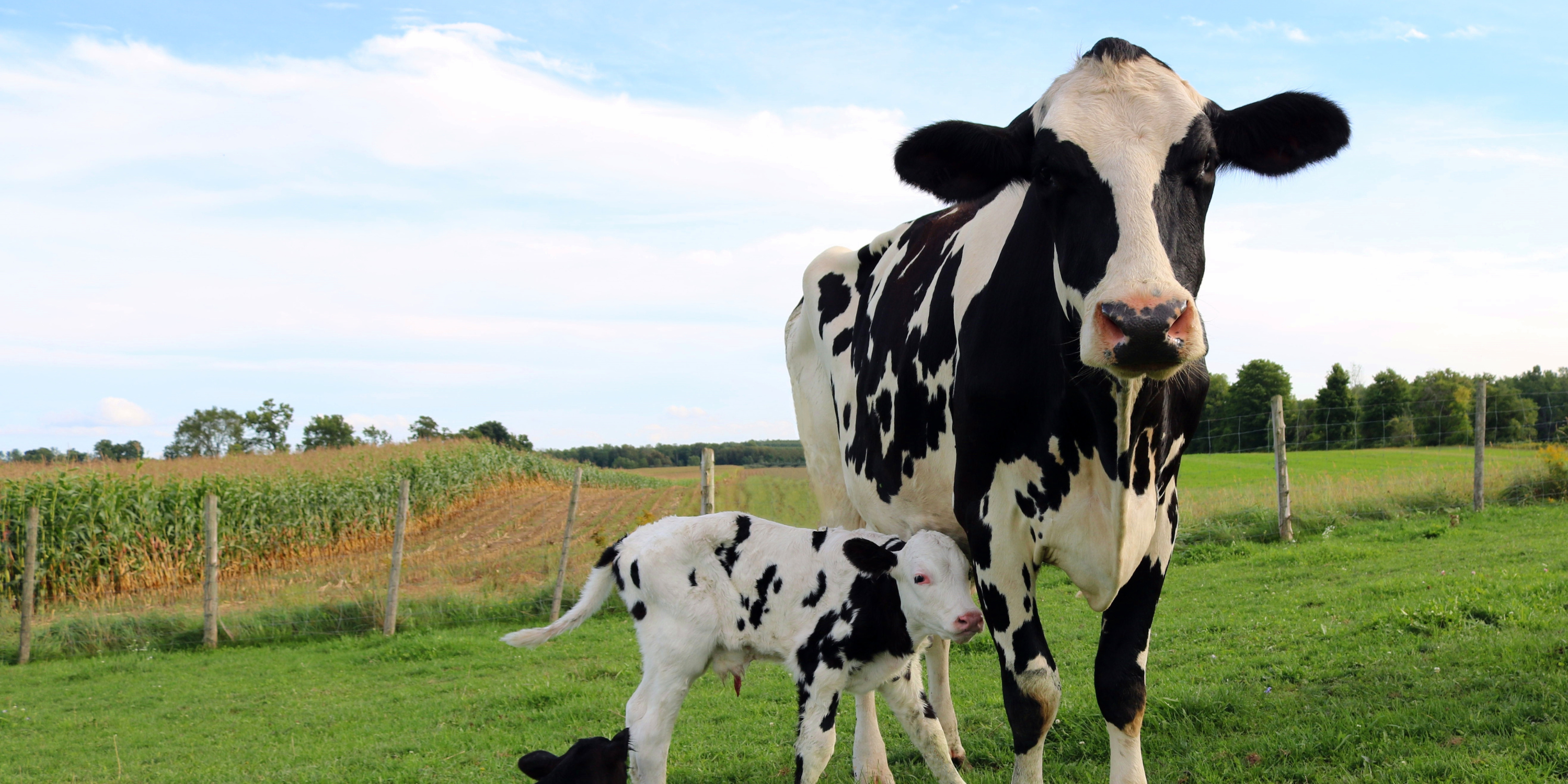
Black-and-White Powerhouse: A Spotlight on Holstein Cattle
Few breeds are as instantly recognizable— or as economically influential— as the Holstein. Known for their iconic black-and-white (and sometimes red-and-white) markings, Holsteins dominate commercial dairy operations worldwide. In this blog post, we’ll explore the breed’s origins, hallmark characteristics, and the vital role Holsteins play in modern milk production.
Origins and History
-
Dutch Roots
Holstein cattle trace their lineage to the North Holland and Friesland regions of the Netherlands, where, for centuries, farmers selected for animals that combined substantial milk yields with hardiness on modest forage. -
Arrival in North America
The first Holsteins arrived in the United States in the 1850s. Their superior genetic potential for milk production quickly made them the breed of choice for emerging dairy farms across the country.
Defining Traits
-
Unparalleled Milk Volume
Holsteins lead all dairy breeds in average annual milk production—often exceeding 22,000 pounds (about 2,600 gallons) per cow under modern, high-management systems. -
Distinctive Markings
Bold black-and-white patterns (or red-and-white variants) make Holsteins easily identifiable in any herd. -
Large Frame
Their sizable bodies accommodate the metabolic demands of high-volume milking, with dairy cows typically weighing between 1,300 and 1,500 pounds. -
Efficient Conversion
Selected for generations, Holsteins efficiently convert feed energy into milk, especially on high-energy Total Mix Rations (TMR). -
Adaptability
Whether in intensive freestall barns or pasture-based systems, Holsteins perform well under a variety of management strategies—though they thrive with consistent nutrition, ventilation, and herd health programs.
Holsteins in Modern Dairy Production
-
Genetic Improvement Programs
A global network of artificial insemination (AI) and genomic evaluation has accelerated genetic gains in milk yield, udder health, and fertility—ensuring continuous improvement in herd performance. -
Specialized Management
Holstein herds often employ sophisticated technologies—automated milking systems, computerized feeding, and activity monitors—to maximize production and maintain cow welfare. -
Component Markets
While volume is king, Holsteins also provide valuable milk components. Breeding and feeding strategies can shift the balance between butterfat and protein to meet fluid milk, cheese, or yogurt market demands.
Why Holsteins Matter
-
Global Dairy Supply
Holsteins account for a significant share of the world’s milk, underpinning fluid milk, cheese, butter, and yogurt production on every continent. -
Economic Backbone
High yields translate to revenue opportunities for farmers, processors, and the dairy supply chain—supporting rural economies and food security. -
Innovation Drivers
Dairy research and technology investments often focus on Holstein herds, generating breakthroughs in nutrition, genetics, and animal health that benefit all dairy breeds. -
Consumer Impact
The consistency and volume of Holstein milk ensure affordable dairy products—helping meet global demand for nutrient-rich foods.
Conclusion
From their Dutch origins to their ubiquitous role on modern dairies, Holstein cattle have earned their reputation as a “black-and-white powerhouse.” Their exceptional milk volume, coupled with ongoing genetic and management innovations, ensures they remain at the center of dairy production worldwide. For farmers and consumers alike, Holsteins deliver the volume, consistency, and economic value that keep milk flowing from farm to table.
Up next: The Jersey Advantage: High‑Quality Milk from a Petite Powerhouse
Share


